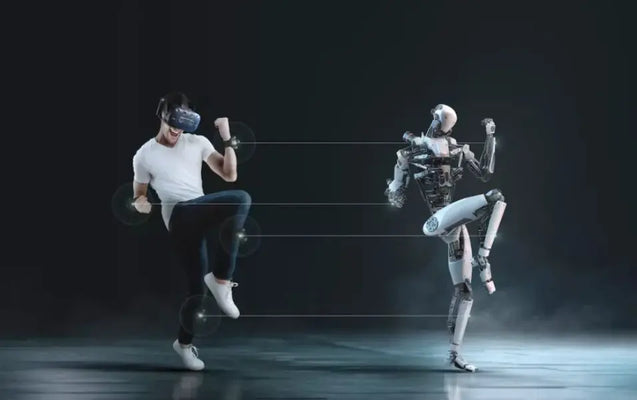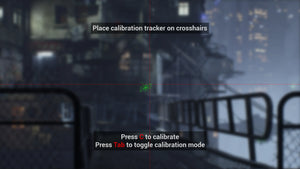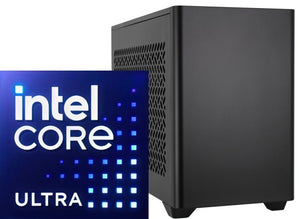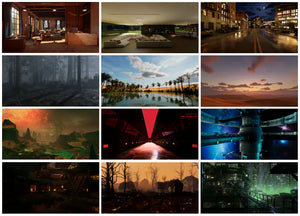Motion Tracking Suit — The Future of Full-Body Motion Capture

In today’s digital world, motion tracking suits have become game-changers in industries like film, gaming, sports, and virtual reality (VR). They’re not just futuristic gadgets anymore — they’re vital tools for creating lifelike animations, realistic gaming movements, and immersive VR experiences.
Whether you’re a 3D artist, a filmmaker, or a VR enthusiast, understanding how these full body motion tracking suits work can open endless creative possibilities.
What is a Motion Tracking Suit?
A motion tracking suit (or motion capture suit) is a wearable system designed to capture and translate human body movements into digital data. This data is then used to animate digital characters or avatars in 3D modeling, animation, virtual reality, and game development.
Modern suits feature inertial measurement units (IMUs), gyroscopes, and accelerometers placed strategically across the body. These sensors record every motion — from walking and jumping to subtle gestures — and send it in real time to a computer or VR system.
Common Uses Include:
-
3D Animation – Creating realistic character movements for movies or video games.
-
Virtual Reality (VR) – Enabling full-body tracking for immersive gaming experiences.
-
Sports & Biomechanics – Analyzing movement efficiency or performance.
-
Robotics – Helping robots mimic human motion.
How Do Motion Tracking Suits Work?
Motion tracking suits work by capturing the position, orientation, and movement of different body parts using sensor data. The sensors communicate with a computer, which processes and maps this data to a digital skeleton.
Step-by-Step Process:
-
Suit Setup – The user wears the suit, ensuring each sensor aligns with key body joints.
-
Calibration – The system records the user’s natural pose (often a T-pose).
-
Data Capture – Sensors detect acceleration, rotation, and orientation.
-
Data Transfer – Wireless transmission sends data to the connected software.
-
Animation Mapping – Software translates the sensor readings to a 3D model or avatar.
This allows filmmakers and developers to record natural movements in real-time — a process far more efficient than manually animating each frame.

The Evolution of Motion Tracking — From Early Mocap to Modern VR Suits
The concept of motion capture dates back decades. The first motion capture suit was developed in the 1980s for scientific research and animation. Early versions relied on optical tracking — using cameras and reflective markers.
Today, however, motion tracking suits for VR and animation have gone fully digital. They use advanced inertial tracking systems — meaning they don’t require external cameras. This makes them portable, affordable, and accessible to creators everywhere.
Milestone Innovations:
-
1980s: Optical mocap used in biomechanics and early film research.
-
1990s: Hollywood adopts motion capture (notably for Gollum in Lord of the Rings).
-
2000s: Gaming industry integrates mocap (e.g., Call of Duty, Assassin’s Creed).
-
2020s: Emergence of 3D motion tracking suits for VR creators and indie animators.
Motion Tracking Suit in VR — Full-Body Immersion
A motion tracking suit for VR allows users to translate real-life movements into virtual environments. Unlike traditional VR setups that track only head and hand motions, a VR motion tracking suit provides full-body tracking, letting players interact naturally in 360° worlds.
Imagine walking, dancing, or fighting in VR — and seeing your avatar replicate every move in perfect sync. That’s the power of full-body motion tracking.
Popular Use Cases:
-
VR Gaming – Full immersion in metaverse-style games.
-
Virtual Training – Used by athletes, pilots, or military teams.
-
VR Chat & Social Spaces – Users express themselves through gestures and poses.
Top brands like Rokoko, Xsens, and Perception Neuron have led this innovation, offering motion tracking suits for VR that combine flexibility, accuracy, and wireless functionality.
Motion Tracking Suit for Animation & 3D Production
In 3D animation, motion tracking suits are essential for achieving realism. Traditional animators once spent hours manually creating movement frames. With 3D motion tracking suits, artists can now perform actions, and the suit captures them directly.
Advantages for Animators:
-
Faster production cycles
-
Natural body movement replication
-
Ability to capture subtle emotional gestures
-
Integration with tools like Blender, Maya, or Unreal Engine
The data from these suits is easily exportable into 3D modeling software, making them indispensable in CGI, VFX, and gaming production pipelines.
Best Motion Capture Suits in 2025
Choosing the best motion capture suit depends on your use case — whether for professional animation, VR gaming, or indie filmmaking.
Top Options:
-
Rokoko Smartsuit Pro II – Ideal for indie creators and studios. Wireless, affordable, and easy to set up.
-
Xsens MVN Link – Industry-grade suit with ultra-precise inertial tracking. Used in Hollywood films.
-
Perception Neuron Studio – Modular and scalable for various use cases.
-
bHaptics TactSuit – Popular among VR enthusiasts for immersive haptic feedback.
-
PrioVR – Focused on gaming applications, offering affordable motion capture.
These suits vary in motion tracking suit price — from $1,000 for entry-level to $15,000+ for high-end professional setups.
Motion Capture Without a Suit — Is It Possible?
A common question is whether motion capture without a suit is possible. The answer is yes — though with some limitations.
Modern software like AI-based body tracking (e.g., DeepMotion, Plask, Move.ai) can capture movements using just a camera. These tools analyze 2D video footage and reconstruct 3D motion data using machine learning.
Pros:
-
No need for wearable sensors
-
Faster setup
-
Affordable or even free options
Cons:
-
Less accurate for complex movements
-
Struggles with occlusion (when body parts overlap)
-
Not ideal for large-scale production
So, while you can do mocap without a suit, professional creators still rely on suits for precision and data consistency.
H2: DIY Motion Tracking Suit — Make Your Own
If you’re a tech enthusiast, you can make your own motion tracking suit using open-source tools and affordable sensors.
Basic Requirements:
-
Microcontrollers (like Arduino or ESP32)
-
IMU sensors (MPU6050, BNO055, etc.)
-
Elastic fabric suit for mounting sensors
-
Bluetooth or Wi-Fi transmitter
-
Software for data visualization (e.g., Blender or Unity)
Building a DIY motion tracking suit helps you understand the mechanics behind mocap and can save thousands of dollars. However, it demands technical skills in electronics and coding.
Motion Tracking Suit Price — What to Expect
Prices vary depending on quality, tracking precision, and intended use.
|
Use Case |
Example |
Price Range (USD) |
|
VR Gaming |
PrioVR, bHaptics |
$700 – $1,500 |
|
Indie Animation |
Rokoko Smartsuit Pro |
$2,000 – $3,000 |
|
Professional Film |
Xsens, Perception Neuron |
$8,000 – $15,000+ |
|
DIY Custom Build |
Arduino + Sensors |
$200 – $500 |
While expensive, these suits are long-term investments for studios, allowing realistic and efficient content creation.
Future Trends — Smarter and More Accessible Motion Tracking
As technology evolves, motion tracking suits are becoming more compact, wireless, and affordable. The integration of AI and machine learning is revolutionizing how motion data is captured, cleaned, and applied in real time.
Emerging Trends Include:
-
AI-Enhanced Tracking:
Future 3D motion tracking suits will use artificial intelligence to automatically correct sensor drift and improve accuracy, even without calibration. -
Cloud-Based Mocap:
Data processing will move to the cloud, enabling real-time collaboration between animators and directors from different locations. -
Wireless Full-Body Systems:
Expect lighter, more comfortable designs with completely wireless sensors for seamless motion tracking. -
Integration with Metaverse Platforms:
Motion tracking suits for VR will play a key role in creating hyper-realistic avatars in social metaverses and virtual workplaces. -
Haptic Feedback Expansion:
Combined systems like bHaptics TactSuit already merge motion tracking and touch feedback, giving users both movement and sensory realism.
These innovations will make full-body motion capture suits not just tools for professionals but also accessible gadgets for gamers, educators, and hobbyists.
Advantages of Using a Motion Tracking Suit
Whether for animation or VR, motion tracking suits offer unmatched benefits in realism, speed, and creative freedom.
1. Real-Time Animation:
Instantly see your character move as you act — perfect for directors and animators during production.
2. Natural Movement Capture:
Captures authentic human gestures, from facial expressions to subtle limb shifts, improving realism.
3. Increased Production Speed:
Reduces manual keyframe animation time by up to 80%.
4. Immersive VR Interaction:
Offers total body control inside VR worlds, enhancing gameplay and fitness applications.
5. Data for Biomechanics & Sports:
Athletes and trainers use motion tracking data to analyze posture, balance, and performance.
Motion Tracking in Film, Gaming, and Beyond
The entertainment industry has been the biggest beneficiary of motion tracking suits — but their applications go far beyond.
1. Film & Animation
Movies like Avatar, The Lord of the Rings, and The Lion King used motion tracking suits to animate CGI characters with human performance precision.
2. Gaming
Modern titles rely on motion tracking suits to bring characters to life. Games developed using Unreal Engine or Unity integrate mocap data directly for fluid animations.
3. VR & AR
Motion tracking suits VR are essential in immersive environments — letting users interact, dance, or even exercise virtually.
4. Sports & Medicine
Coaches and physiotherapists analyze body mechanics using suits to prevent injuries or improve performance.
5. Robotics & AI
Engineers use motion capture suits to teach robots human-like motions through imitation learning.
H2: Common Challenges with Motion Tracking Suits
Despite their advantages, motion tracking suits face some challenges.
-
Sensor Drift:
Over time, IMU sensors can lose calibration, leading to inaccurate tracking. -
Comfort & Fit:
Some suits can feel restrictive or warm during long sessions. Many ask, “Are mocap suits uncomfortable?” — high-end brands now focus on breathable, flexible fabrics to fix this. -
Complex Setup:
Initial calibration and software syncing can be time-consuming for beginners. -
High Cost:
Professional-grade systems can still cost thousands of dollars, making them inaccessible for casual creators.
However, advancements in wireless systems and DIY projects are quickly minimizing these issues.
Motion Detection vs. Motion Tracking — The Key Difference
A common source of confusion is between motion detection and motion tracking.
|
Feature |
Motion Detection |
Motion Tracking |
|
Purpose |
Detects movement presence |
Follows and records movement in detail |
|
Technology |
Uses sensors/cameras to sense motion |
Uses multiple sensors or AI to map body movement |
|
Application |
Security systems, gesture control |
VR, animation, biomechanics |
|
Example |
Lights turning on when you walk by |
Character mimicking your exact pose |
In short, motion detection identifies movement, while motion tracking quantifies and replicates it.
How to Apply Motion Tracking in Projects
Implementing motion tracking depends on your goal — animation, research, or VR.
For Animators:
-
Wear your 3D motion tracking suit and calibrate it.
-
Record your movements using the mocap software (e.g., Rokoko Studio or Xsens MVN).
-
Export data as FBX/BVH files.
-
Import into animation software like Blender, Maya, or Cinema4D.
-
Clean up and retarget the animation to your 3D character rig.
For VR Developers:
Integrate mocap data directly into game engines like Unreal Engine or Unity, allowing real-time interaction within VR.
For Researchers:
Use motion data to study gait analysis, sports motion, or ergonomic studies.
DIY and Open-Source Motion Tracking Solutions
For hobbyists, DIY motion tracking suits can be built with open-source hardware and free software.

Recommended Tools:
-
Hardware: Arduino Nano, Raspberry Pi, or ESP32 microcontrollers
-
Sensors: MPU6050 (accelerometer + gyroscope)
-
Software: Blender, Processing, Unity, or OpenMoCap libraries
The community-driven development around make your own motion tracking suit tutorials has made it possible to achieve impressive results even on a budget.
H2: Motion Tracking Suit Price Guide — Choosing What Fits You
To recap, here’s a simple breakdown of costs and features:
|
Category |
Example Suits |
Price Range |
Use Case |
|
Budget (DIY) |
Arduino + MPU6050 |
$200 – $500 |
Learning, experiments |
|
Mid-Range |
Rokoko Smartsuit Pro, PrioVR |
$1K – $3K |
Indie animation, VR |
|
Professional |
Xsens, Perception Neuron Studio |
$8K – $15K+ |
Film, commercial studios |
For most creators, Rokoko or Perception Neuron suits strike the perfect balance between price and precision.
The Impact of Motion Tracking on Creativity
Motion tracking suits are transforming how we express creativity. Artists can now merge physical performance with digital storytelling, turning every movement into data-driven art.
In VR, these suits allow users to dance, fight, and move freely, making the experience emotionally and physically engaging. In animation, they bridge the gap between human expression and digital worlds.
The synergy between motion, data, and imagination defines the next era of immersive content creation.
FAQ Section
1. How do motion tracking suits work?
They use sensors like accelerometers and gyroscopes to detect movement and send data to a computer. Software translates this data into motion for 3D models or VR avatars.
2. What is motion tracking used for?
It’s used in animation, VR gaming, filmmaking, robotics, biomechanics, and sports performance analysis.
3. How to apply motion tracking?
Wear the suit, calibrate it, capture movement, and import the recorded data into 3D software for animation or VR applications.
4. What was the first motion capture suit?
The first mocap suit was developed in the 1980s for scientific research. By the 1990s, Hollywood adopted it for movies like Lord of the Rings and Avatar.
5. Are mocap suits uncomfortable?
Early versions were bulky, but modern suits are lightweight, elastic, and breathable, designed for comfort during long sessions.
6. What’s the difference between motion detection and motion tracking?
Motion detection only senses if movement occurs, while motion tracking captures and analyzes the detailed path of the motion.
7. Can you do a mocap without a suit?
Yes — AI-based camera software like Move.ai or DeepMotion can capture motion without suits, but accuracy is lower compared to full-body suits.
Conclusion
Motion tracking suits have moved from niche studio tools to mainstream creative devices. From VR gaming to 3D animation and sports analytics, they redefine how humans interact with technology.
The ability to capture human movement with lifelike accuracy empowers creators to blur the line between reality and digital imagination. Whether you’re buying the best motion capture suit for professional work or building a DIY motion tracking suit, the possibilities are limitless.
Ready to explore the world of motion capture?
Get your motion tracking suit today and start bringing your digital creations to life with every move you make. Or hire ARwall for all the virtual production services, products and softwares. Contact us today to make a mark in the production industry.





